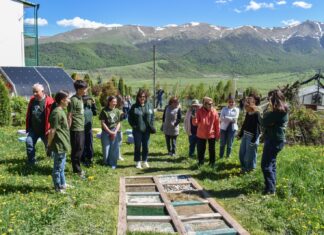YEREVAN-MIYAZAKI, Japan — Shinnosuke Matsui is an associate professor at the University of Miyazaki’s Center for Language and Cultural Studies. From 1998 to 2001, he studied at the Kobe University, Japan, and in 2007 he defended his doctoral thesis titled “Identity Reacquisition among Armenian-French.” From 2011 to 2020 he was a lecturer at Kobe University, Kyoto University, Osaka Sangyo University and Yamato University. Since 2020 he has been a research fellow at the Research Center for Promoting Intercultural Studies at Kobe University. He has written and translated six books and 25 papers in academic journals (mainly in Japanese, as well as in English).
I first met Shinnosuke Matsui in 2010 at the international conference in Osaka, Japan. Seeing my name on my badge, he greeted me with “barev,” and since then, we have kept in touch.
Shinnosuke, your academic interests are varied — from French, Armenian, immigration and diaspora studies to minority language pedagogy, Muslim schools in France, modern Assyrian and the Yazidi people. What is the thread connecting your various areas of interest?
I believe that my research themes can be summarized as 1) an interest in what is being lost (some cultures and languages), and 2) an interest in the enthusiasm and strategies of those who are trying to protect them. I have recently realized that these are the criteria for choosing my research theme.
You have also studied the Armenian schools of France. How are such micro-histories of interest for a Japanese academic researcher?
Japan also has begun to accept “foreign workers” (in effect, they will become “immigrants”) in the past few years, a century after France, due to the shortage of young workers caused by the declining birthrate and an aging population. The problems of integration of their children into schools, identity crises, etc. have already begun to emerge. Then, it is quite possible that after a few more generations, they and their descendants, as adults, will establish their own schools in order to pass on their own language to their children while living in Japan, or so that their children will not have difficulties with the language when they return to their “home” country. At that time, the history of the establishment of Armenian schools in France and their management strategies would be of great help. Although “Korean schools” and “Brazilian schools” already exist in Japan, they are not recognized as general schools in Japan. Legally, they have the same status as entities such as driving schools. The Armenian schools of France are not “schools only for Armenians” but “bilingual French-Armenian schools open to all students residing in France” and are regular private schools in France. Therefore, students who do not have Armenian roots can also enroll. Thus, Armenians in France are creating schools that are open to both the French nation and Armenia, and I believe that this strategy will be very helpful for future school education in Japan.








